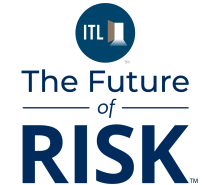Despite a positive overall sentiment about 2025, business leaders must navigate significant challenges to profitability, employee productivity and organizational resilience.
This complexity arises from an ever-changing risk environment. Key risks include climate change, natural disasters, cyber threats like deepfakes, the growing adoption of AI, and geopolitical uncertainties. Organizations must adapt swiftly to remain competitive and resilient.
Building resilience through comprehensive risk management
Integrating risk management into corporate culture is critical for turning disruptions into opportunities in 2025. Businesses must plan for climate-related risks, as climate change has escalated the frequency and intensity of natural disasters, leading to average annual global losses of $151 billion.
Organizations should conduct a business impact analysis to understand risks and recovery strategies. Extending business interruption policies to 24 to 36 months to accommodate long-term recovery needs and updating replacement costs in property insurance policies annually are essential steps.
Moreover, creating a "people plan" is vital, as disasters affect employees as much as operations. Establishing robust communication systems for employee support and providing essential resources such as food and medical benefits during crises ensure both operational continuity and workforce stability. Organizations that prioritize resilience are better equipped to maintain operations and recover quickly, gaining a competitive edge.
See also: Cyber Incidents Top Global Business Risks in 2025
Leveraging data and analytics for strategic decision-making
One of the essential actions businesses need to take in 2025 is leveraging data for strategic decision-making. The shift from cautious experimentation to widespread adoption of analytics is accelerating. Businesses that harness advanced analytics gain crucial insights into risk exposures and can "see around the corner."
Leading organizations are using data-driven strategies to optimize insurance costs, enhance employee benefits and improve decision-making alignment across the organization. By embracing analytics, companies can improve resilience and employee engagement, positioning themselves as leaders in navigating emerging risks.
Addressing cyber and geopolitical risks
Addressing emerging cyber and geopolitical risks is also a significant focus in 2025. The digital and geopolitical landscape presents challenges that businesses must address to secure profitability. Cyber threats, including ransomware, deepfakes and social engineering, are growing in sophistication. Projected global costs from deepfake fraud alone are estimated to have reached $1 trillion in 2024.
However, not all companies currently hold cyber insurance policies. To enhance cybersecurity preparedness, businesses should evaluate exposure to cyber risks, consider data retention policies and employee training, and offer employees cyber protection tools to safeguard both personal and corporate information. Securing comprehensive cyber insurance coverage tailored to evolving threats is crucial.
Geopolitical risks, often perceived as distant issues, have direct impacts, such as supply chain disruptions and regulatory changes. To mitigate these risks, companies should invest in political risk insurance to manage potential losses from political violence or government actions and use trade credit insurance to protect against payment defaults by foreign entities. Collaborating with vetted insurance partners in target regions ensures compliance with local policies and strengthens international operations.
Enhancing employee productivity and well-being
Employee productivity remains a top priority for 2025, as businesses face rising costs for medical benefits, pharmacy drugs and compensation. Companies are increasingly aligning total rewards with productivity metrics, emphasizing efficiency and innovation.
To enhance workforce vitality, more businesses are adopting a human-centric approach, building workplaces that prioritize well-being, flexibility, social connection and continuous learning. Leveraging data analytics helps identify cost-saving opportunities, especially in healthcare and pharmaceutical expenses. Additionally, reducing financial stress by offering solutions such as personal insurance coverage and financial coaching supports employees' financial health and improves productivity.
See also: Rising Climate Risks Demand New Strategies
Treating insurance as a strategic asset
Insurance should be a strategic tool for mitigating complex risks, protecting reputation and safeguarding the bottom line in 2025 and beyond.
Companies must conduct annual reviews with their broker to ensure policy limits and replacement costs are up to date. Additionally, they should explore alternative risk transfer solutions, such as captives and parametric insurance, to address gaps in traditional coverage.
By guiding organizations in adopting advanced analytics to better understand risks and employee needs and offering tailored solutions for employee well-being and financial security, brokers enable companies to achieve growth, resilience and operational excellence.
Thriving amid uncertainty
Insurance in 2025 requires integrating data analytics with strategic risk management. Organizations can navigate challenges by treating insurance as a strategic asset while building resilience against emerging risks. Expert partnerships and employee wellness programs help companies adapt to uncertainty.






